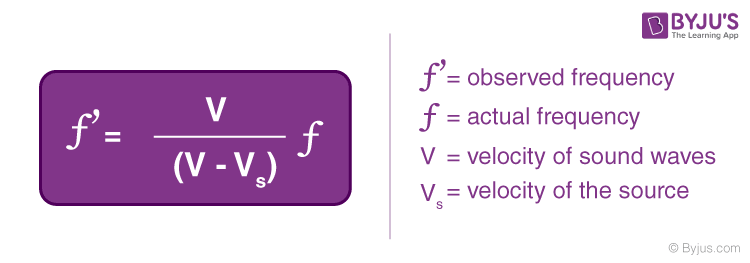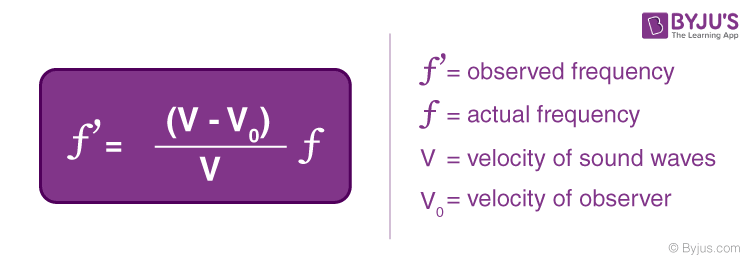Doppler Effect Formula
Doppler effect is the apparent change in the frequency of waves due to the relative motion between the source of the sound and the observer. We can deduce the apparent frequency in the Doppler effect using the following equation:

While there is only one Doppler effect equation, the above equation changes in different situations depending on the velocities of the observer or the source of the sound. Let us see below how we can use the equation of the Doppler effect in different situations.
(a) Source Moving Towards the Observer at Rest
In this case, the observer’s velocity is zero, so V0 is equal to zero. Substituting this into the Doppler effect equation above, we get the equation of the Doppler effect when a source is moving towards an observer at rest as:
(b) Source Moving Away from the Observer at Rest
Since the velocity of the observer is zero, we can eliminate V0 from the equation. But this time, the source moves away from the observer, so its velocity is negative to indicate the direction. Hence, the equation now becomes as follows:
(c) Observer Moving Towards a Stationary Source
In this case, vs will equal to zero, hence we get the following equation:
(d)Observer Moving Away from a Stationary Source
Since the observer is moving away, the velocity of the observer becomes negative. So, instead of adding V0, we now subtract, since V0 is negative.

Comments
Post a Comment